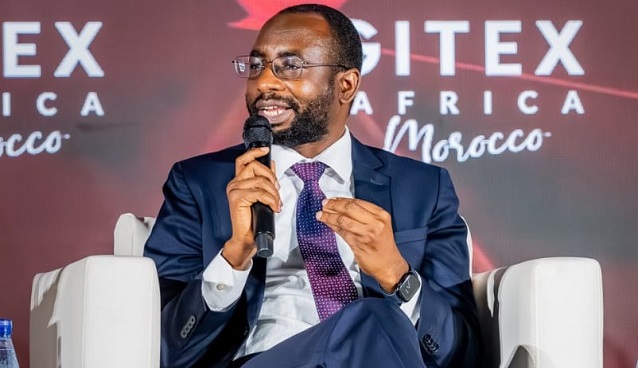E-Business
Cyberoam Extends Its Layer-8 Technology Innovation with UTQ
Cyberoam, a leading global provider of network security appliances has introduced a unique capability – User Threat Quotient (UTQ).
This is expected to help IT security managers identify users posing security risks with ease. With UTQ, Cyberoam extends its own innovation of Layer-8 technology and turns over a new leaf in user-identity focused security.
Available on Cyberoam’s Next-Generation Firewall and UTM appliances, UTQ harnesses information derived out of user’s web traffic to determine risky users that pose security and /or legal risks.
Studies have proved that users are the weakest link in the security chain and patterns of human behavior can be used to predict and prevent attacks.
Speaking on the innovation, Mr. Abhilash Sonwane, senior vice president, Products and Technology, Cyberoam said, “Enterprise networks generate lots of data with ample clues into user-triggered events, but the information remains incomprehensible and correlating data from various logs and reports takes time and special skills, and is subject to the risk of human oversight.”
Given this scenario, a security manager wishing for a science fiction-like capability to preempt and mitigate threats shouldn’t come as a surprise.
The ongoing paradigm shift towards pre-emptive security shares some signs of such capabilities.
Many organizations and security managers are leveraging big data analytics tools to capture early signs of specific user actions or network event patterns that may hint at a possible ongoing attack or anomaly.
Commenting further, Mr. Sonwane added, “Most security teams struggle with timely detection of risk-prone user behaviour since they remain devoid of required actionable security data.
User Threat Quotient (UTQ) from Cyberoam effortlessly profiles suspicious web behavior of network users, helping security teams with actionable inputs and relieving them from having to go through a labyrinth of massive logs.”
The User Threat Quotient (UTQ) studies the web behavior of users by analyzing massive data of allowed and denied web traffic for web categories like IP Address, P2P, Phishing and Fraud, Porn, Spam URL, Spyware, URL Translation Sites and more that pose security and legal risks.
The User Threat Quotient helps CSOs / IT security managers by spotting risky users based on their web behavior at a glance without manual efforts; removing complexity in analyzing terabytes of logs to identify suspicious or risk-prone user behavior and eliminating the need for SMBs to invest in separate SIEM tools to spot risky users.
Others are enabling investigation into the spread of risk within the network and facilitating corrective actions to fine-tune user policies.
Winds of change in IT and network security clearly indicate a growing need to focus on internal threats or risks from users.
As a result, many CXOs now identify analytics and actionable security as a key investment area besides cloud, virtualization and mobility, to leverage security analysis that enable faster decision making.
Extending its own innovation of Layer-8 identity-security with UTQ, Cyberoam continues to bridge the gaps where many security paradigms fall short in combating insider threats and user-triggered risks.
Cyberoam Technologies, a Sophos Company, is a global Network Security appliances provider, offering future-ready security solutions to physical and virtual networks in organizations with its Next-Generation Firewalls (NGFWs) and Unified Threat Management (UTM) appliances.
The virtual and hardware Cyberoam Central Console appliances offer Centralized Security Management options to organizations, while Cyberoam iView allows intelligent logging and reporting with one-of-their-kind, in-depth reports.
Cyberoam is accredited with prestigious global standards and certifications like EAL4+, CheckMark UTM Level 5 Certification, ICSA Labs, IPv6 Gold logo, and is a member of the Virtual Private Network Consortium.
E-Business
Google Blocks 5.1Bn Harmful Ads in 2024, Suspends 39m Accounts

Google’s 2024 Ads Safety Report revealed how artificial intelligence is now a frontline defense against harmful online content, blocking 5.1 billion ads, restricting 9.1 billion more, and suspending over 39 million advertiser accounts, most before a single ad was shown.

The crackdown comes as scams become more sophisticated, with many leveraging AI-generated content or impersonating public figures.
Google’s advanced AI models, powered by Gemini, helped detect fraud faster than ever, spotting signs like stolen payment info, fake businesses, or coordinated scam networks.
In Africa, including Nigeria, the impact is especially important. Impersonation scams and misleading political ads remain a major concern.
In response, Google updated its Misrepresentation policy, deployed a team of 100+ global experts, and took down over 700,000 scam-related advertiser accounts, leading to a 90 percent drop in reported impersonation scams.
With nearly half the world voting in 2024, Google also removed over 10 million election-related ads for failing to meet transparency rules requiring verified identities and clear sponsorship disclosures.
In his reaction, Alex Rodriguez, general manager for Ads Safety at Google, said these numbers show what AI can do when it’s focused on safety.
“We rolled out more than 50 AI model upgrades in 2024, helping us act faster and smarter—stopping threats before users even saw them,” Rodriguez added.
While AI handles large-scale enforcement, human reviewers now focus on complex cases.
Google continues working with global regulators, industry partners, and organizations like the Global Anti-Scam Alliance to keep ahead of evolving threats.
E-Business
DG NITDA Tasks Africa to Lead the AI Revolution Through Strategic Leadership, Inclusive Innovation

The Director General of the National Information Technology Development Agency (NITDA), Kashifu Inuwa CCIE, has urged industry leaders across the continent to integrate Artificial Intelligence (AI) into their business, organisational, and operational models to unlock new opportunities, redefine leadership, and drive smarter decision-making toward making Africa deeply rooted in AI-driven innovation.

Inuwa made this call when he spoke on “Harnessing AI for Strategic Leadership” during a panel session at the Main State of the GITEX Africa 2025 held in Marrakech, Morocco.
The aim of the panel session was essentially to explore how data-driven and intelligence-led strategies can transform business models, optimise resources, and unlock new opportunities through AI-powered processes across various nations.
Speaking to an international audience of policymakers, technologists, and investors, the DG positioned Africa, particularly Nigeria as a rising force in the global AI landscape, championing a people-first and strategy-led approach to AI development and governance.
The DG argued that to be effective in today’s dynamic environment, leaders must evolve into AI-driven leaders and leverage technology not just as a tool, but as a partner in decision-making.
“AI is shifting the skills we value today, as well as the processes we use to do our daily work, so to drive strategic leadership, you need to be an AI-driven leader and find a way to use AI as a tool to create co-intelligence whereby you bring people and computers to work together to deliver your strategic vision as a leader,” he noted.
While urging leaders to combine AI with the unique strengths of their teams to deliver real business value, Inuwa stated that “Strategy must always come first, and technology second.”
He outlined four principles for effectively utilising generative AI which are inviting AI to the tale, maintaining human oversight, designing models with guardrails, and adopting a mindset of continuous improvement.
Inuwa explained that AI is invited to the table by giving it a role in organisational tasks, maintaining human oversight to correct bias and misjudgment, designing guardrails to ensure privacy ethics, and inclusivity, and adopting a mindset of continuous improvement by treating today’s AI as the least capable version that can be used.
He however warned against the risks of deploying AI systems built on data that fails to represent the diverse realities of global societies. Stressing the need for digital visibility of all cultures and citizens, he cautioned that if data doesn’t see a community, the system won’t see it either.
Introducing NITDA’s approach to governance in regulating AI through the Regulatory Intelligence Framework that is anchored on the 3 pillars of Awareness, Intelligence and Dynamism.
“In our approach to regulating AI in governance, we have a framework we call Regulatory Intelligence Framework, which as a regulator we need to be aware of the environment, we need to be dynamic because things change, and we also need to be intelligent. We need to know the data and make sense out of it,” he disclosed.
“Then we have 2 approaches, the first one is a rule-based where you can come up with certain guidelines and expect people to comply with them and we have a non-rule based, which allows them to build use cases, and based on those use cases, put the guard rails and agree on the best practices, which is always the best when it comes to AI governance,” he added.
Envisioning Africa’s AI future in the next 5 years, Inuwa painted a visionary picture where the continent will integrate AI into solving real-world challenges in every economic sector thereby leapfrogging development gaps.
Inuwa firmly averred that by augmenting human capability with AI, the continent can unlock unprecedented levels of innovation, efficiency, and inclusive growth.
“We missed the first, second, and third industrial revolutions, but this fourth one, we must lead it and not just follow.” He concluded.
Other industry leaders who shared their experiences and insightful ideas at the panel session were the Special Envoy on Technology, Republic of Kenya, Philip Thigo, CEO Pesalink, Gituku Kirika, and the Head of Africa, Open AI, Emmanuel Lubanzadio.
E-Business
NIPOST in Intensive Care, Needs Reforms Need to – Kekemeke

Nigerian Postal Service (NIPOST) is in Intensive Care Unit (ICU) and needs urgent reforms to revive it, according to Isaac Kekemeke, board chairman of the service.

Kekemeke, who spoke at a workshop organised for NIPOST staff in Abuja yesterday, added that it is now time to go the whole hog to reform and make NIPOST fulfill its destiny to compare and compete favourably with multinational postal agencies.
“The approach may not be palatable at all times but we need to take the tough but necessary decisions to exit the intensive care unit. We are either out of ICU in good health or head for the morgue. NIPOST either functions effectively now as a commercialised state operator or gets privatised, so that myself, the PMG, and a good number of you risk the loss of our jobs,” the chairman said.
No doubt, he added, “Change is not always easy as many loathe change because of the uncertainty it brings but it is in my place to urge you all to embrace the change we advocate.”

 Telecom2 days ago
Telecom2 days agoSalesforce Revolutionizes Business Intelligence with AI-Powered Tableau Next

 Broadcasting2 days ago
Broadcasting2 days agoMultiChoice Brings Easter Home with Dedicated Pop-Up Channel

 News2 days ago
News2 days agoAirtel Smartcash Set to Power Stress-Free Easter with Seamless Cashflow

 E-Business2 days ago
E-Business2 days agoDG NITDA Tasks Africa to Lead the AI Revolution Through Strategic Leadership, Inclusive Innovation

 E-Business2 days ago
E-Business2 days agoGoogle Blocks 5.1Bn Harmful Ads in 2024, Suspends 39m Accounts

 E-Financial2 days ago
E-Financial2 days agoHow CBEX Operators ‘Enticed’ Victims –SEC

 Telecom2 days ago
Telecom2 days agoTemu and Shein Raise U.S. Prices Amid Trump-Era Tariffs

 E-Financial2 days ago
E-Financial2 days agoCBN Warns Banks, Fintechs on Compliance with Sanctions






















